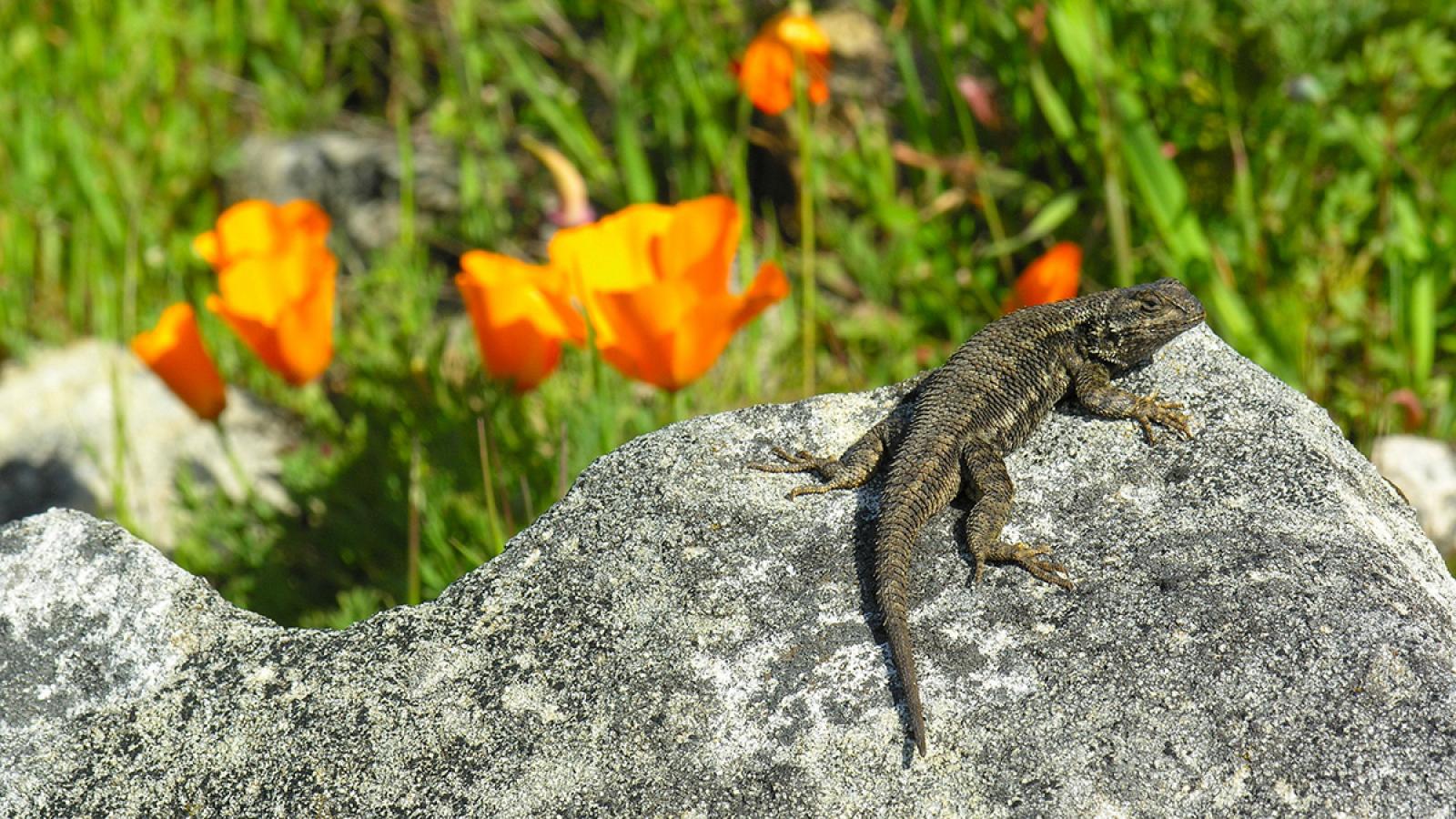Along the trails in open space land, the most common reptile you will see is the western fence lizard (Sceloporus occidentalis), also known as a blue-belly. These lizards are often found sunning themselves on the trail, or on stumps, logs and fence posts (which is how they get their common name). They can be easily identified by their bright blue bellies!
Western fence lizards fulfill a large role in Bay Area ecosystems as both predator and prey. They eat large numbers of insects, arachnids and other arthropods, but they are also important food sources for raptors, snakes and some mammals.
But did you know that these lizards are disease-fighting superheroes? Lyme disease incidence is much lower in areas where these lizards are found. A certain protein in these lizards’ blood kills the bacterium that causes Lyme disease. When ticks feed on a western fence lizard, the Lyme infection is cleared from the tick and therefore cannot be passed on to us humans.
Western fence lizards are territorial, especially during spring mating season. Around this time, keep an eye out for male fence lizards doing "push-ups." This is a display that male lizards use to try to attract females! This posturing also lets the male lizards show off their blue belly scales, which is why fence lizards are also sometimes called blue bellies.


